THE NEW YORK DAILY NEWS REVIEWS 'CARRIE' - THE DAY AFTER THE FILM OPENS THERE
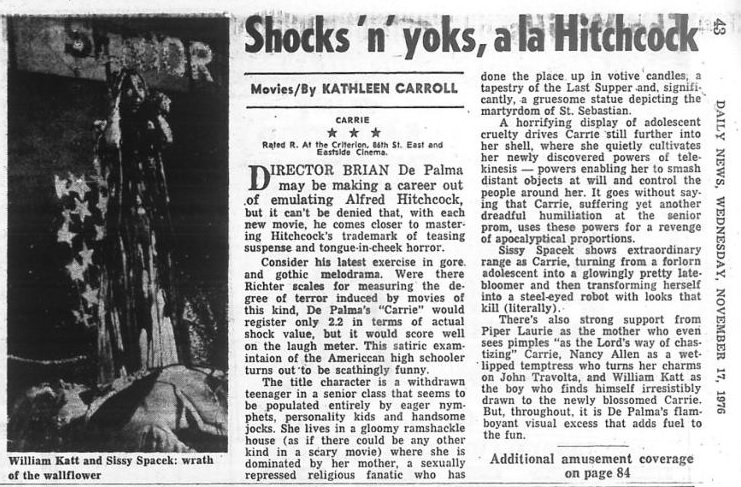
 Hello and welcome to the unofficial Brian De Palma website. Here is the latest news: |
|---|
E-mail
Geoffsongs@aol.com
-------------
Recent Headlines
a la Mod:
Listen to
Donaggio's full score
for Domino online
De Palma/Lehman
rapport at work
in Snakes
De Palma/Lehman
next novel is Terry
De Palma developing
Catch And Kill,
"a horror movie
based on real things
that have happened
in the news"
Supercut video
of De Palma's films
edited by Carl Rodrigue
Washington Post
review of Keesey book
-------------
Exclusive Passion
Interviews:
Brian De Palma
Karoline Herfurth
Leila Rozario
------------
------------
| « | November 2021 | » | ||||
| S | M | T | W | T | F | S |
| 1 | 2 | 3 | 4 | 5 | 6 | |
| 7 | 8 | 9 | 10 | 11 | 12 | 13 |
| 14 | 15 | 16 | 17 | 18 | 19 | 20 |
| 21 | 22 | 23 | 24 | 25 | 26 | 27 |
| 28 | 29 | 30 | ||||
De Palma interviewed
in Paris 2002
De Palma discusses
The Black Dahlia 2006

Enthusiasms...
Alfred Hitchcock
The Master Of Suspense
Sergio Leone
and the Infield
Fly Rule
The Filmmaker Who
Came In From The Cold
Jim Emerson on
Greetings & Hi, Mom!
Scarface: Make Way
For The Bad Guy
Deborah Shelton
Official Web Site
Welcome to the
Offices of Death Records

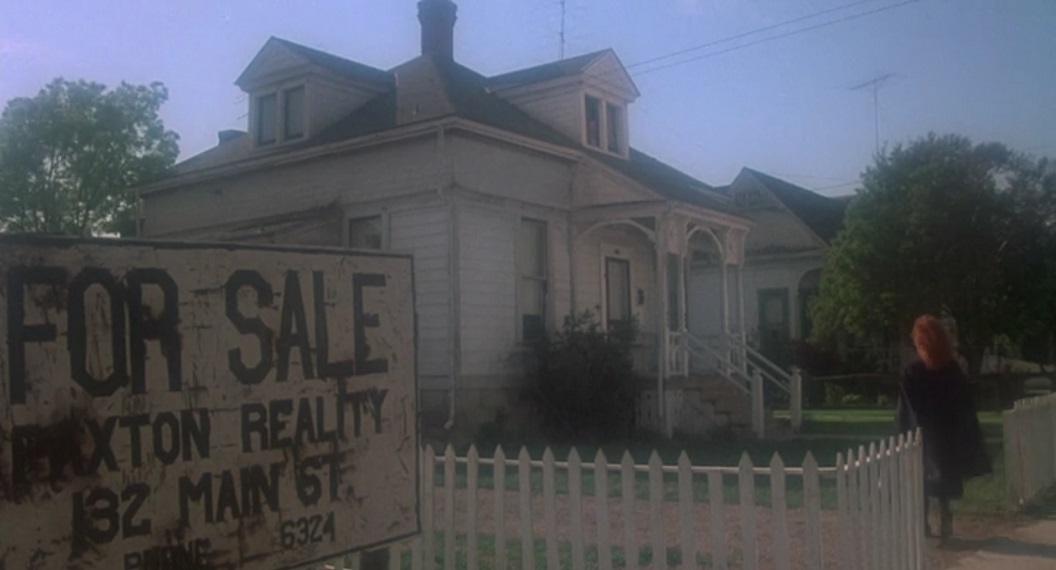
King’s novel takes place in the fictional town of Chamberlain, Maine. (A coastal village of the same name exists in the town of Bristol, Maine, but it’s not the location depicted in the novel.) The film, however, takes place in a small, unnamed bedroom community where everybody knows everybody.“I had sort of conceived it as a town anywhere in America, one of those sort of all-American towns,” says production designer Jack Fisk, who had previously worked on De Palma’s 1974 cult horror musical Phantom of the Paradise. “What I like to do on films is make them universal when we can, so that everybody can appreciate them, and not be too specific about where it is. … [Carrie] seemed like such a universal story, you know, teenage revenge. That’s what Brian used to tell Sissy all the time: ‘It’s a story of teenage revenge.’” Fisk and Spacek met while working on Terrence Malick’s Badlands (1973) and married in 1974.
While Carrie features only a dozen locations, Fisk says he put about 6,000 miles on his car driving around the L.A. region looking for spots to shoot the film. The hardest to find was Carrie’s house. Fisk says the problem in some of the usual places, like South Pasadena, is that over time the houses had gotten bigger as people added on to them.
“I wanted a house that looked like it was in a small town, and it looked isolated and it looked quirky, unusual,” says Fisk.
Taking into account Margaret White’s extreme Christian fanaticism, Fisk had the idea to model the Whites’ home after a type of uniquely Philadelphia row house. Known fondly as a Trinity, or a Father, Son, and Holy Ghost, it gets its name from three single-room floors that are connected by a steep, winding staircase. In the late ‘60s, Fisk lived in one such house with David Lynch during their time at the Pennsylvania Academy of the Fine Arts.
One day, Fisk and his Volkswagen ended up in the Ventura County town of Santa Paula.
“I drive by this house and the dormer [window] upstairs is off-center and it looked so bizarre,” says Fisk. “It being off center, it’s like something an architect would never do,” he adds. “I thought it was just remarkable. You look at it and it was weird; something was wrong with it.” The house on North 7th Street between Santa Barbara Street and Main Street was one-and-a-half stories, not the triptych that Fisk had in mind, but it felt isolated and atypical. Fisk estimates that the house was only about twenty-five feet by twenty-five feet. “It was bizarrely small and singular.”
“It was a really old, beautifully done, wood frame house, and we couldn’t find anything like that [in L.A.].” says Dow Griffith, whose first location manager job was Carrie.
A 1981 Ventura County Cultural Heritage Survey of Santa Paula noted that the house was built around 1900 in the Vernacular Victorian style with Eastlake details. The survey rated the house in fair condition.
Santa Paula exteriors appear onscreen for about five minutes of Carrie’s 98-minute running time, but they set the tone of the entire movie. White picket fences, kids riding their bikes on sidewalks and Santa Paula’s Main Street all added to the small town aesthetic and mood the filmmakers were after.
“We basically modeled things on the Santa Paula location that we found for Carrie’s house and that sense of Anywhere, USA,” says Griffith.
Located along California State Route 126 just fourteen miles east of Ventura, Santa Paula wasn’t convenient in proximity to any of the film’s L.A. locations. Palisades Charter High School, the Hermosa Beach Community Center, the Cahuenga Branch of the Los Angeles Public Library, Morningside Elementary School in San Fernando, and the gymnasium set built at the Culver Studios all made up Bates High School – named after Norman Bates. There are seventy miles between Santa Paula and the Farmer John slaughterhouse in Vernon – where Billy Nolan (John Travolta) and pals acquire the film’s infamous pig’s blood. But, in terms of film production, what Santa Paula lacks in convenience it makes up for with an abundance of character.
Fogata, who is also on the board of the Santa Paula Historical Society, was fourteen or fifteen when the filmmakers of Carrie shot a scene in the front yard of the Craftsman home built in 1911 that’s been in his family for about seventy years.In the film’s opening, Carrie – scared and traumatized after getting her period for the first time – is tormented by her bullying classmates in the girls’ locker room. Carrie is dismissed from school for the day and walks home along a lush, tree-lined street, her school binder clutched to her chest. A boy on a bicycle weaves in and out of the tree line, taunting the demure teenage girl with the insulting nickname, Creepy Carrie. A quick, piercing glance in the boy’s direction sends him tumbling from his bike and onto the Fogata family front yard located at 601 East Santa Paula Street.
“I remember watching them shoot it. They must have shot it twenty times to get the fall right,” says Fogata.
This being before the days of star trailers and massive base camps, Fogata says that craft service was set up on his front porch and his mom opened up the house for the cast and crew.
“I remember John Travolta was sitting in my living room; Sissy Spacek was sitting in my living room. It was kind of their relaxing area,” says Fogata.
Over the years, Fogata’s house has been seen in numerous movies, commercials and music videos, he says, but he remembers Carrie being the first. The same trees from the aforementioned scene are prominent in the music video for Stevie Wonder’s Grammy-nominated, 1987 single, “Skeletons.”
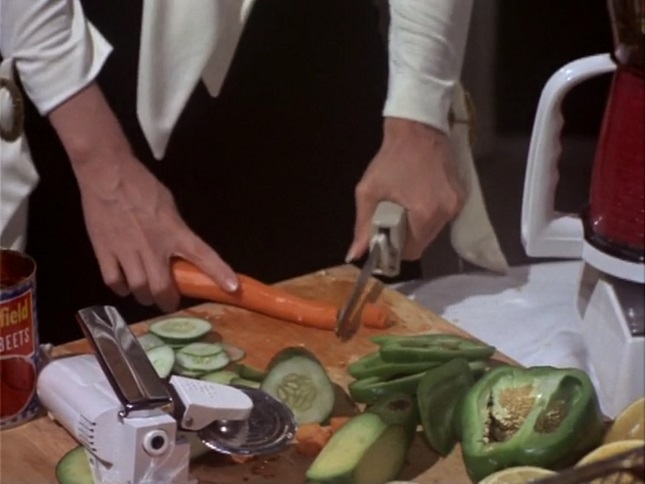
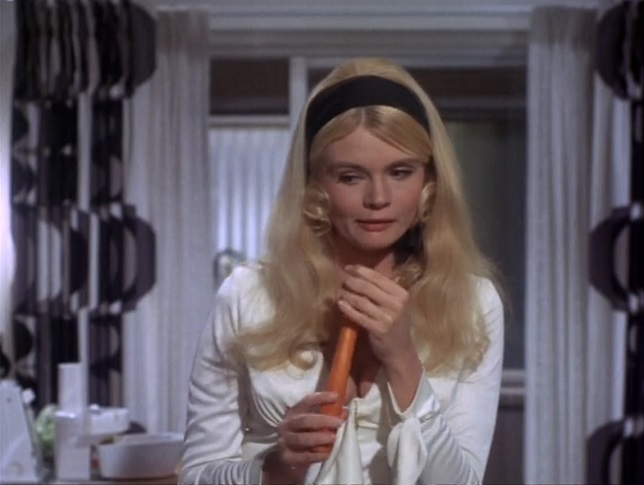

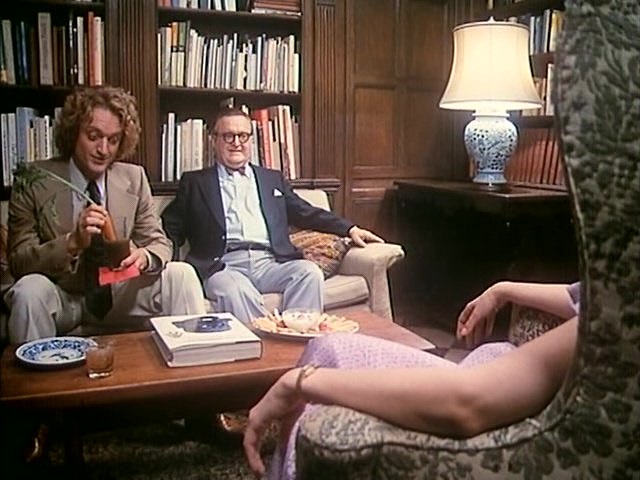
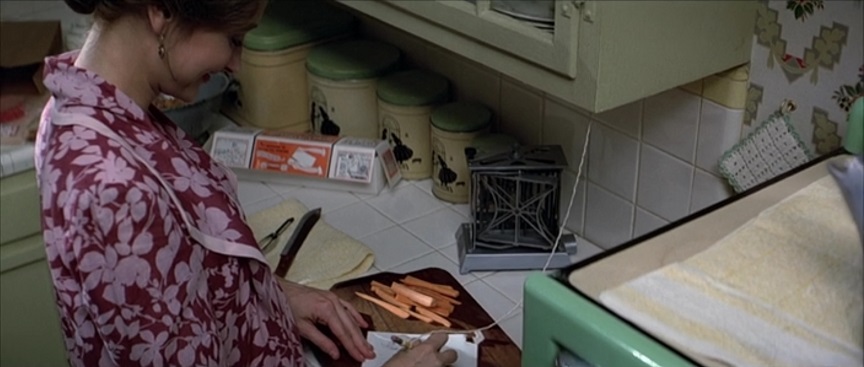



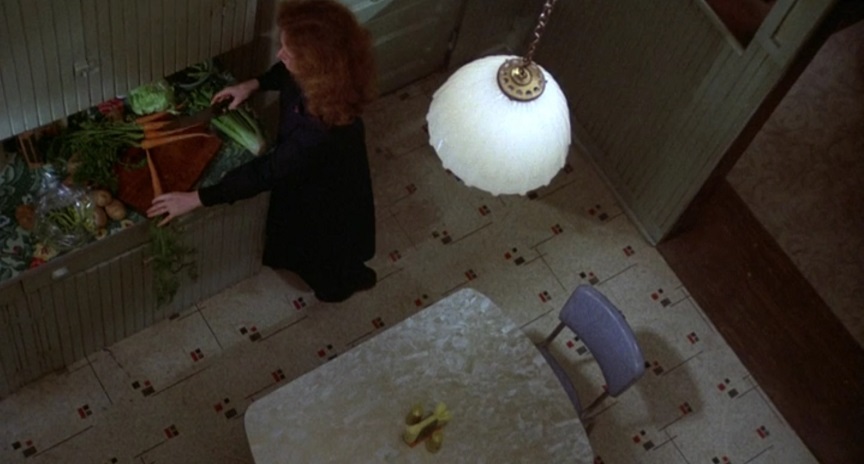

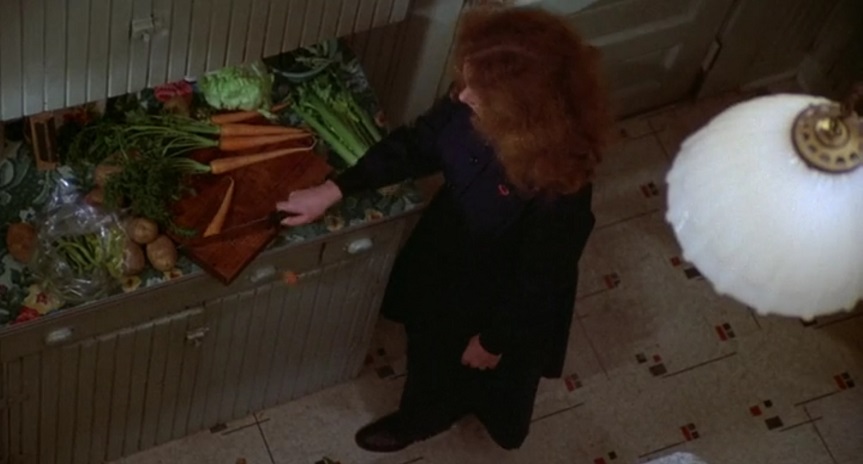
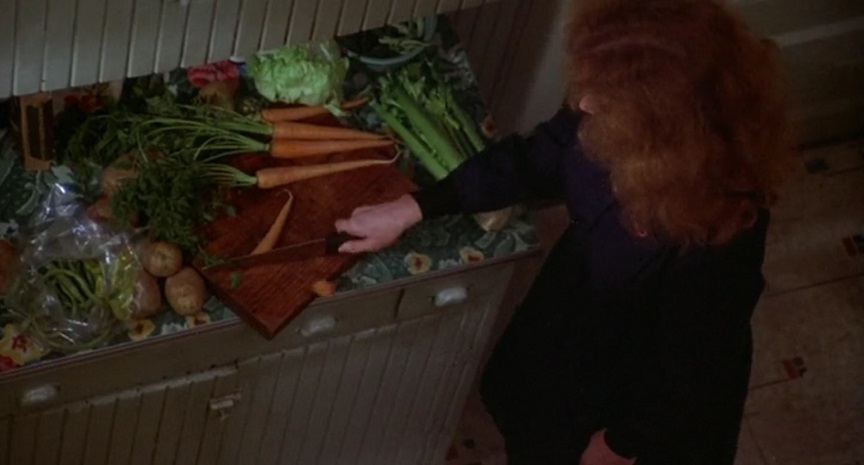
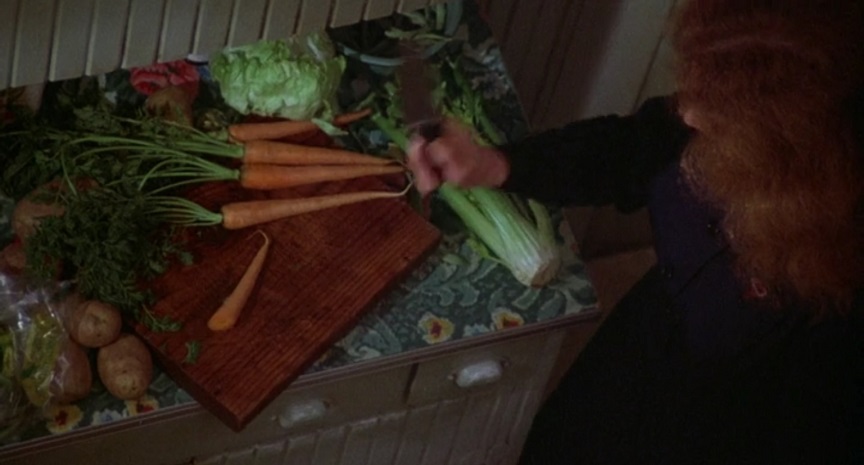


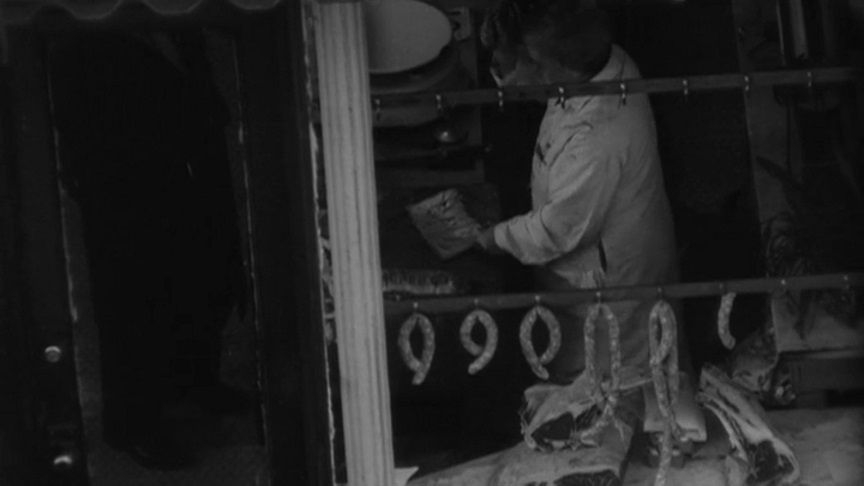
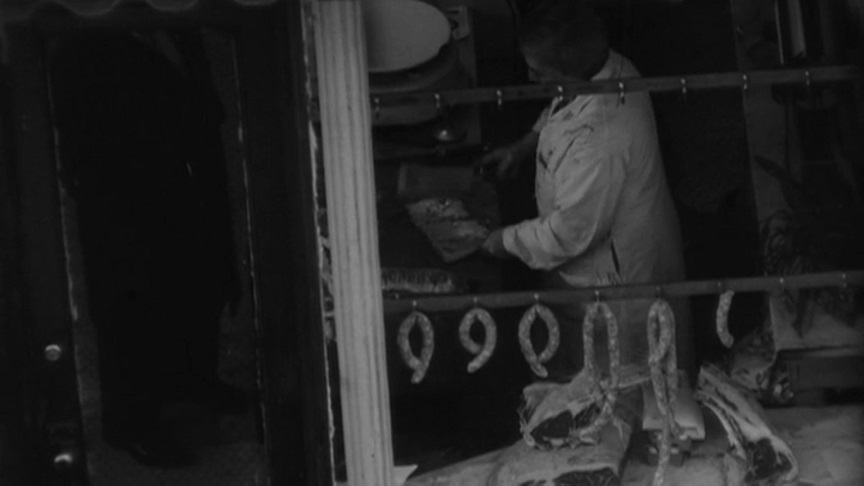
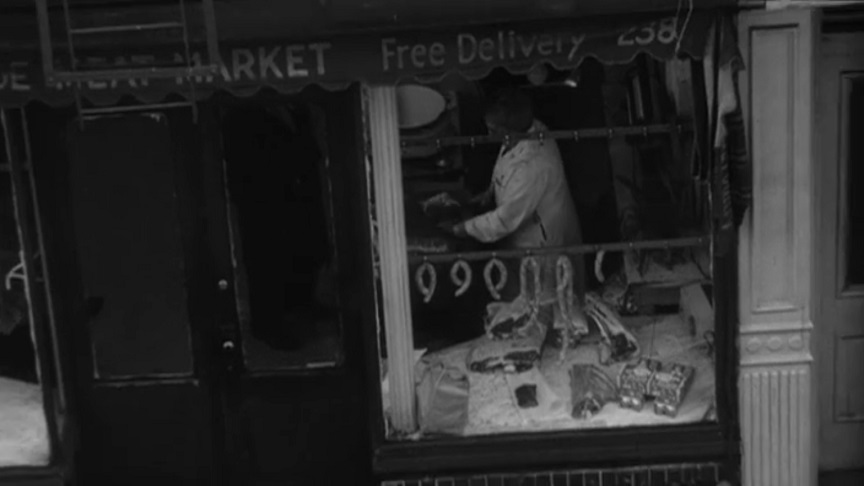
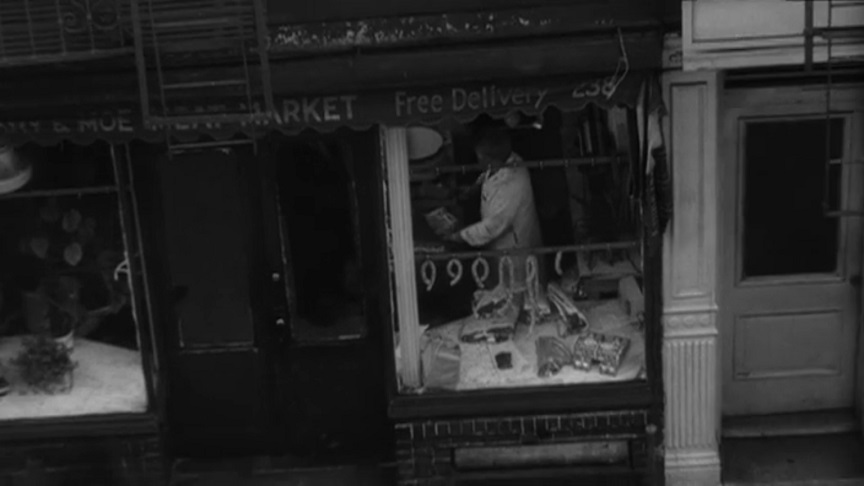
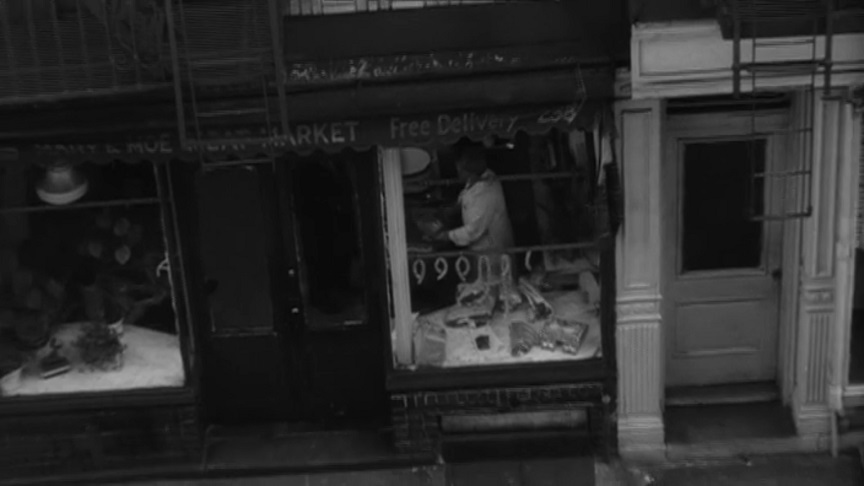

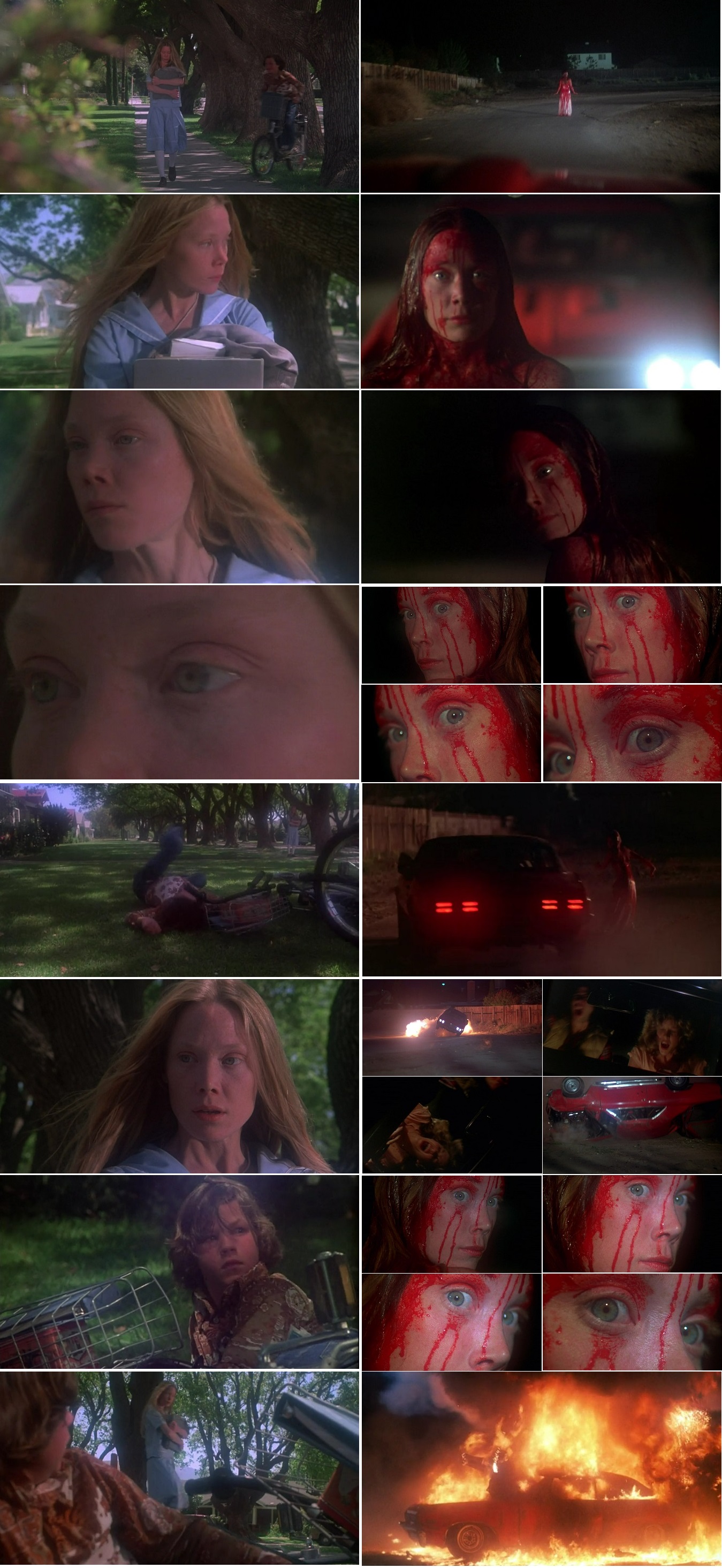

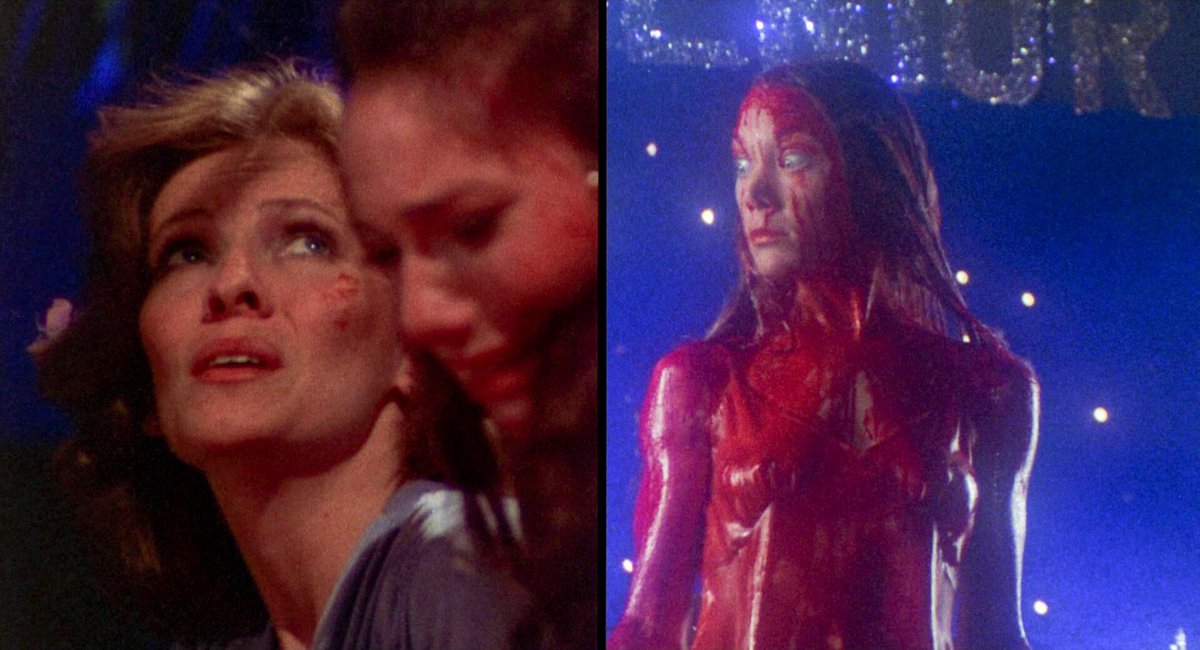
There are some really great split screen moments, like in that final battle or when we see the death of RJ Cyler's character and we get to see everyone's reaction. Are those things that were in the script or when did you decide to use those?Yeah, Jeymes always wanted to do those two split screen moments. The other one is on the train. That last one that you're talking about when RJ dies, he was very particular about what it was. So we worked really hard even in pre, we got to Santa Fe a couple of weeks early, we were cutting in Santa Fe, and I actually worked with the assistants just with stock pictures to try and get that right, to get the rhythm right.
So that was very specific and then the other one, which is Cherokee, LaKeith, talking through the wall to the General on the train, that was a little bit more like, "I want split screens here, you figure it out." I think he was specifically, he did want it to wipe on, and then I just had to figure out how to cut a scene where can see both sides. Which is a tricky thing for an editor because normally you're always directing the audience's gaze a little bit. With split screens you can suggest but you can't tell them exactly where to look.
Because LaKeith was so magnetic, I would use cuts to sometimes try and draw your attention over to the other side, we needed to see what was going on there. And the other thing that was tricky about that is LaKeith is a very fluid performer, so he doesn't say the same thing twice ever. So those things were not shot at the same time, when he was doing the general side, he didn't do all that stuff about "Dred Scott free," he didn't do the countdown at the end. So I had to find bits and pieces that I could play on the general side that made it look like they were part of the same conversation.
And then there were just fun discoveries, I found that we could also wipe off with the movement of the door. So that was really fun and Jeymes told me to look at Brian De Palma for split screens. He's a big De Palma fan so I went back and looked at "Dressed To Kill" and a couple other De Palma's, and "Carrie," to see how those worked.
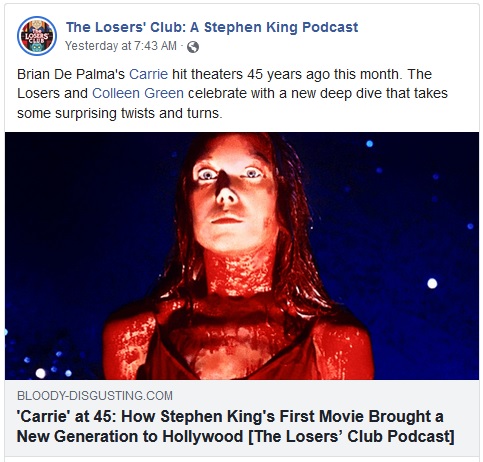
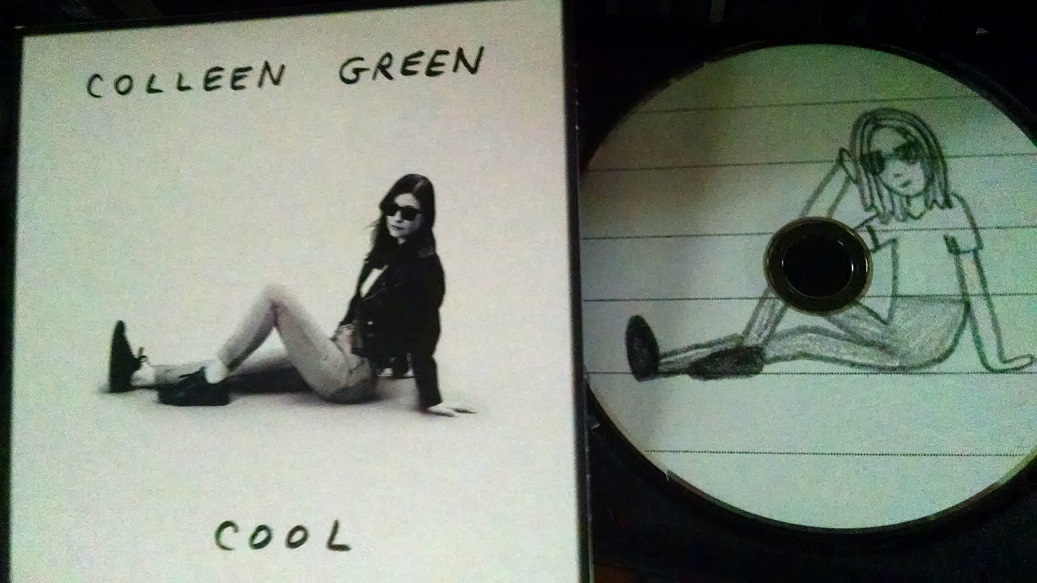
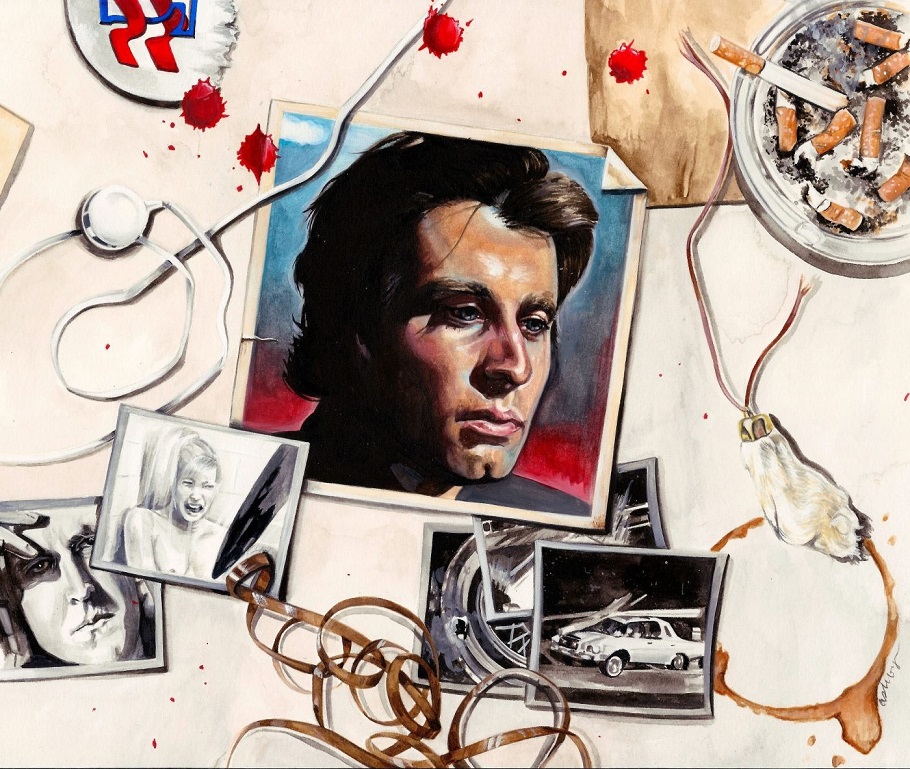
To watch Blow Out is to watch an artist confronting his deepest fears using the techniques and technology of the medium that had previously offered him salvation and the ability to wrest control from chaos. That artist is John Travolta’s Jack Terry. That artist is also Brian De Palma.Recording his father taught him the power of the voyeur’s cinema; designing a decade’s worth of arch and unhinged thrillers interlaced with dizzyingly/dazzlingly visual set pieces of murderous mayhem soaked in deliciously endorphic filmmaking taught him how the voyeur’s cinema has the power to make audiences look at what he wanted them to see and how he wanted them to see it. To direct them as much as his films. And what De Palma saw, and defiantly wanted his audience to see as both a warning and an indictment, was the drain-circling, atavistic degradation of art and culture—while using the immediately decaying tools of art and culture to ring the alarm bells and focus the audience’s attention.
A decade before, De Palma witnessed the encroaching nihilism and commercialization of his generation’s desperate movement to save itself—“When I made Greetings, I found myself on talk shows, talking about the revolution, and I realized I had become just another piece of software that they could sell, like aspirin or deodorant. It didn’t make any difference what I said. I was talking about the downfall of America. Who cares? In my experience, what happened to the revolution is that it got turned into a product, and that is the process of everything in America. Everything is meshed into a product”—and that horror multiplied with his termination from Get to Know Your Rabbit, before unleashing itself in a moment of terrible clarity: standing in an elevator, and hearing that the ear-piercing tune playing was a Muzakification of The Beatles’ cinematic epic about the mutability of reality, “A Day in the Life.” That single moment generated his Phantom of the Paradise, in which an artist literally makes a deal with the Devil to preserve his music, only to hear it survive in increasingly terrible bubblegum incarnations chewed by a mindless crowd. It’s a rock ‘n roll fable in which De Palma directed his audience to witness a fate worse than selling your soul: a world buying back your commodified cultural revolution as elevator (to hell) music. But no one cared; the film died a quick death in theaters.
In 1981, De Palma was driven by the same, singular fury, now compounded by his terrible failure to make Prince of the City, the film he intended to be the defining artistic statement that would prove his seriousness as an auteur. He felt the generation that had turned its own revolution into something to be sold, growing fat on couches while watching peeping tom game shows like Candid Camera, refused to look at the world around them, at the political machinations and murders hinting at power structures operating at levels beyond their imaginations, and thus needed to be directed to see those powers-that-be rendering them impotent, whether those powers were a corrupt government or simply an impatient bottom-line-based movie studio. De Palma wanted to craft a cinematic magic bullet that would zigzag through it all, savaging power at every level and making such a percussive bang when firing from the barrel of his camera that everyone would hear. And in a moment altogether fitting for the hyper-referential De Palma filmography, the design for this bullet came from a merging of his cinema with that of a previous master:
While editing sound on his previous film, Dressed to Kill, De Palma was sorting through the “fill” in his effects tracks (“fill” being the industry colloquialism for random strips of film laced between individual sound effects on a reel) and found, wedged between sounds like “knife slices” and “woman screams” was a strip of film from David Lean’s Lawrence of Arabia. One of the greatest films ever made (and a De Palma favorite) was being recycled like trash and used to separate the sounds of salacious fucking and shower-killing in his sleaze-epic erotic thriller. Not only did this reinforce his obsession with the idea of all things trending towards commercialized dissolution, it jacketed another layer of lethality to the bullet he was honing—the notion that something of life-shattering importance could be buried beneath the surface of a film, between the sounds.
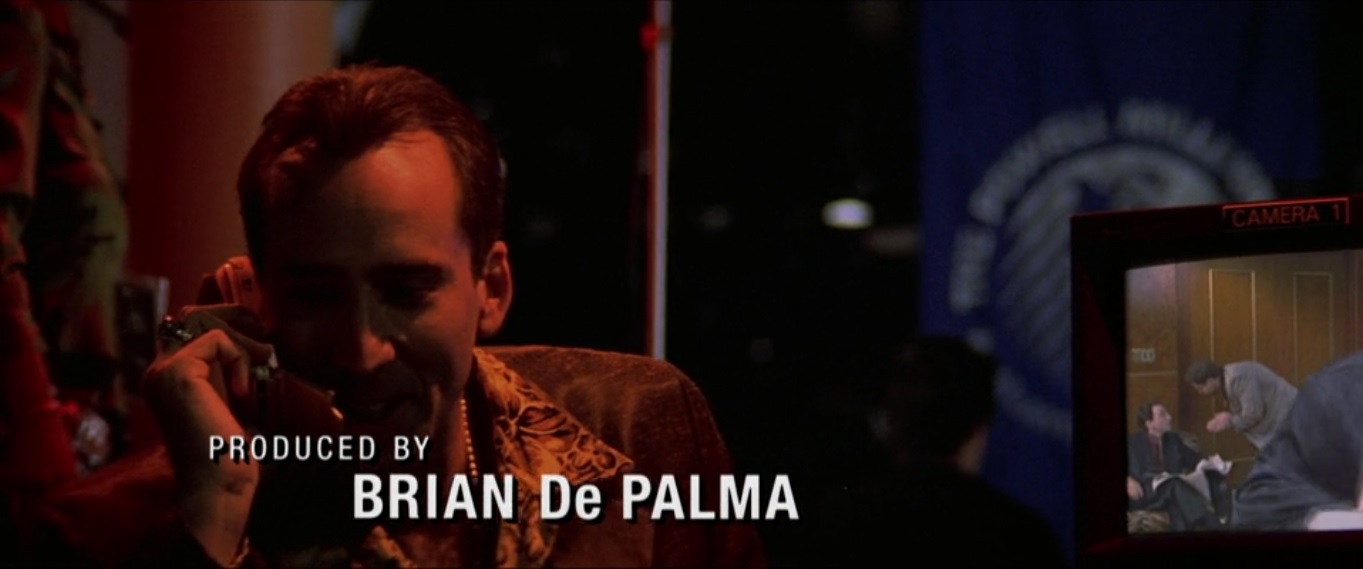
Take a legendary director like Brian De Palma, renowned for his grandiose visual style. Then take a star (Nic Cage), known for just as grandiose an approach to the craft of acting. At the time Nic Cage was peaking as a box office star and a newly established star of action blockbusters. De Palma was somewhat on the way down, coming off the back of helming a popular adaptation of an old 60’s TV show, Mission Impossible. If that seemed to suggest that De Palma was in danger of becoming gun for hire, over auteur, Snake Eyes felt like (for better and worse) a once heavy hitting powerhouse was exercising the full extent of his visual whimsy.Snake Eyes certainly isn’t near the top of De Palma’s CV, but it’s the last big pulpy shlocker of his CV. Critically derided upon release, the film has picked up a little more appreciation in years since. For one, it’s a technical marvel with the film opening on a lengthy unbroken take up to the inciting incident of the piece (where a government official is shot whilst attending a boxing match in Vegas). That opening also happens to follow around Nic Cage’s rogue Vegas cop and as only he can, Cage revels in hogging the unbroken take and leading the steadi-op on a merry journey throughout the large arena (guts and all). Once we get back to De Palma’s bread and butter of Hitchcock ode thrills and plot unravelling, things are less spectacular but still gripping. Cage maintains our attention and the aesthetics always dazzle, even if the payoff doesn’t quite land.

Chvrches had already planned on taking 2020 off after two solid years of touring behind its third **Love is Dead opus. And as she [lead singer Lauren Mayberry] dug into her horror-flick schematic for Album No. Four, watching a slew of gruesome gorefests in the process, she again stumbled across Joel Schumacher’s 1987 cult-favorite **The Lost Boys. Around the same time, she was delighted to discover a newer entry like **Final Girls. Set in the fictional seaside California town of Santa Carla, **Lost Boys wound up inspiring her moribund “California” lyric. “For me, that song was like writing through the lens of freaky Santa Carla, about people dying in California, and they’re being killed by vampires — that’s one read on it,” Mayberry says. “But then an actual read on it is how we moved here to get writing jobs, and how none of that really matters now, and now you’re probably going to die in California, completely disconnected from all your friends and family. And you only know one guy ([Martin] Doherty), and he’s in a house down the road, but you can’t really see him.” She takes a deep, calming breath, exhales.” So it was a VERY cathartic piece when we wrote that one, I think,” she adds.However dark their firmament, the stars all seemed to align for Chvrches in 2020, just the world shuddered to a halt. The band name was still in the public eye, thanks to the Marshmello collab and “Death Stranding,” a track commissioned for a video game of the same name by renowned **Metal Gear Solid designer Hideo Kojima. Mayberry had an empathic new understanding of her own songwriting skills — ‘Plays well with others,’ her pandemic report card would have read — and Cook and Doherty were feeling the urge to revisit vintage synth-rock sounds and warmer textures from the ‘80s, via fave bands from that period like OMD, Depeche Mode, plus New Order and its Joy Division precursor, and even — on the sinister-carnival-evoking Final Girl itself — Rio-era Duran Duran. They had even set aside the suggestive album title, which Mayberry had found in a decade-old book of nixed potential band names. It didn’t take them long to agree on an allegorical theme, where Elm Street crosses paths with Camp Crystal Lake — machetes optional.
“We were really lucky for the most part because we’d planned to take 2020 off to make the record,” says Mayberry, who got into the spooky swing of things by growing her hair long and dying it blonde to resemble Drew Barrymore (perhaps channeling Barbara Crampton) in one of her all-time favorite nail-biters, Scream. “We only had a little summer touring planned, and that was a fortunate position to be in because a lot of bands we knew were just gearing up to put out albums (at lockdown). So I think there’s an energy to this record that’s really special because it was made in a vacuum — we worked remotely, and the band didn’t really exist outside of the three people that were in it anymore.” Sans tours, press junkets, and promotional duties like TV appearances, she asks, rhetorically, “What IS a band when you take all those things away? It’s about writing, and last year, that became a steady, consistent thing. We’d meet up every day on Zoom and do our writing, and you’re working on music with your colleagues, but also your friends, in real-time, talking about the horrible shit that everybody was going through.” As awkward as it sounds, she adds, she’ll treasure that trial by fire, always.
Spare time, of course, was spent Netflixing down the ghoulish rabbit hole for film research. Besides Final Girls, Mayberry can easily pinpoint three spectral favorites that topped her list after repeated viewings: Carrie (“Stephen King writes female characters so well, and that movie means so many things, on so many levels,” she praises); the original **Halloween (“Because John Carpenter is the absolute greatest — he’s making the music AND writing and directing the films, and it’s just impressive to me that he did that,” she says); and, of course, the satirical **Scream.
“And it makes a lot of sense as a reference for this record,” she reveals, “because it is that meta, talking-about-the-medium-whilst-making-the-medium kind of thing, and I think that’s incredibly clever. The sequels I could do without, but the original is great, and the whole point of me dying my hair was to kind of play with the tropes of women in horror. So if I can be blonde like the Drew Barrymore character, who only lasts for five minutes, what would people project onto you? Because in order to be the true final girl, you have to have an innocence, and the audience needs to root for you.” She pauses for effect. She’s given this considerable thought: “But what if you don’t have that? What if you feel like the Scream Queen, but you’re actually not the Final Girl? What do those things mean? So maybe only a few people other than me will pick up on these things. But that research was really helpful for my writing process.”
In the cover art for the album’s syncopated folk/pop/dance pastiche of a single, “Good Girls” — which sneeringly deconstructs society’s simpleminded sexist strictures for what constitutes a female of good moral breeding — Mayberry even taps into the Nagel-print-retro look of a Brian De Palma femme fatale, circa 1984’s Body Double. And she unveils her brilliant ideas in such an authoritative, rapid-fire volley that she effortlessly packs a two-hour talk into 35 condensed minutes. So we don’t have to discuss the new reigning pandemic Scream Queen, the brainy Samara Weaving of Mayhem, The Babysitter, and Ready or Not fame. But she has plenty of time to address the mascara-sporting white elephant in the room, singing along on “How Not to Drown,” a certain Mr. Robert Smith, The Cure being another musical influence that Cook and Doherty took on Screen Violence board.
“I still feel very what-the-fuck about it — I can’t believe that it actually happened,” Mayberry gasps, sounding fangirl giddy. “But honestly, it was just a bizarre, happy accident, which I feel has been on par for us. The biggest things to have ever happened to Chvrches have always been the loose things — it’s never been something that we wanted desperately or tried to get to happen in some way. It’s always been some weird accident, where somebody met somebody at a bar and said, ‘Oh, I LIKE that band!’” This boon came courtesy of Chvrches’ manager Campbell McNeil of Lunatic Entertainment, who casually informed a lawyer he shared with The Cure that his trio (which now unofficially includes drummer Jonny Scott) wouldn’t mind opening a few upcoming dates for the band since Smith was finishing a new album. Nothing more invasive than an innocent have-their-team-contact-our-team request, she swears. “Campbell was just looking ahead, you know? Doing what good managers do,” she recollects. “But Robert Smith doesn’t HAVE a manager, so then he got an email from him saying, ‘Aloha, Campbell! I hear you have been looking for me. What do you want?’ So then Campbell had to call US up and go, ‘Uhh, guys? I just did a thing…so what DO you want?’ And we were like, ‘What?! What do we ask for? I have no idea where he even came from!’” Chvrches dutifully sent Smith early Screen demos as work examples, she adds, and he happily opted to contribute to “Drown.” “That was the one that he picked out,” she says proudly. “And hearing his voice on that song is so insane, but hearing him sing words that I wrote is incredibly bizarre, as well, especially given what the song is about. It’s really a full circle, so you never know where things are going to end, I suppose.”
Script-wise, however, it’s supposed to end with the Final Girl dispatching the masked serial killer with his own chainsaw. Or, as Mayberry warbles blithely in the anthem of the same name, “And you know that she should be screaming.” But this defiant auteur enjoys no longer taking cues from any directors. “And with some movies, if you package them in a certain way, people are going to want to watch them, and they’re going to take on — and engage with — the ideas in a way that.
Might not have otherwise,” she firmly believes. So with Screen Violence,” she concludes, “I like that there are layers to it. Like, if you just want to listen to this record and think, ‘Oh, it’s a horror concept album that Chvrches made because they love horror movies because they’re geeks like that,’ then that’s fine. But it’s also a bit meta because it isn’t really about that at all.”